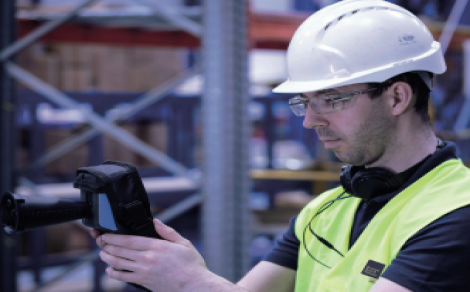Compressed air: 5 top tips for sustainability

By Libby Peacock, category manager – fluid power, Brammer Buck & Hickman.
Generating compressed air is energy intensive and expensive, frequently with a considerable percentage – up to 30% wasted or misused. However, is it possible to reduce energy usage without negatively affecting a machine’s performance and without significant expenditure? The answer is a resounding yes.
At Brammer Buck & Hickman, we regularly run workshops on compressed air under the name of ‘REHAB’, which stands for:
Reduce energy
Education
Health & safety
Autonomous maintenance
Best practice
These workshops are designed to empower customers to make changes for themselves and the response is always one of astonishment when we can prove together, with hands-on training, how minor adjustments can generate significant results. Here, we share our top five tips from REHAB on how to reduce energy consumption when it comes to compressed air:
Tip 1: Choose the correct components
Switching to high flow couplings could increase the productivity of air tools by some 50% and reduce energy consumption by up to 30%. In more than half of all applications, the pneumatic drive is too large for the intended purpose. Simply downsizing the cylinder or using single acting cylinders are often all that is required of a pneumatic system and can help reduce air consumption.
Also look at the connectors you are using. Every tube run, fitting and filter causes a pressure drop. Every 1 bar pressure drop means an increase of 7% to the cost of compressed air generation. A 90-degree elbow can be the equivalent of a 1.6 metre pipe length. Check to see if you can change elbows to straight connectors and Tee’s to Y pieces.
Tip 2: Hose and tubing sizes
Opting for a tubing size with a smaller diameter for valves and cylinders can reduce air consumption, while choosing a larger diameter hose for air tools can save money. Using tubing with low drag coefficiency can increase air flow and reduce pressure drops to optimise compressed air systems to achieve yearly savings of around £15,000.
Tip 3: Reduce the pressure
Incorporating pressure regulators at point of use can very quickly pay dividends. Reducing the pressure by just 1 bar can see up to a 10% reduction in energy usage. Installing a regulator means the pressure may be reduced without having a negative effect on the operation of the machinery. As well as wasting compressed air, operating at too high a pressure can increase wear on the components leading to burnout and the associated maintenance and replacement costs.
Tip 4: Switch off and save
Pneumatic equipment left idling can consume between 20-70% of its full load power. Apply responsible usage principles to pneumatic components such as: installing manual shut off valves and switching off when machinery is not in use; implementing time-operated solenoid valves which allow the operation of pneumatic components only if a subsequent piece of equipment is in use; or installing sensor-operated interlocks which detect the need for compressed air equipment to operate can isolate or apply air as appropriate.
Tip 5: Stop leaks
In a pneumatic system, leakages can account for between 5-10% of the air supplied, although some systems record a loss of 40-50% of the air input. One of the biggest sources of air leaks are pushin fittings, although it’s probably not the fitting that’s to blame but the tube. Using scissors, box cutters and the likes to cut pneumatic tubing can compromise the seal and cause the fitting to leak. Using a tube cutter ensures a good seal.
Consider installing a flow meter, which is the most effective way of reducing leaks and energy consumption, by monitoring leaks as part of a facility wide maintenance programme. You might also want to consider investing in a Compressed Air Leak Audit to fully identify leaks so you can take remedial action.
These small adjustments are easy to make without the need for any costly equipment or intervention from third parties. In fact, they can be done by some of the most junior employees, including Apprentices, ensuring everyone can participate in the move to more sustainable processes.
REHAB training workshops are available exclusively from Brammer Buck & Hickman. For more information, contact your local branch or download the REHAB brochure from https://uk.rubix.com/cataloguelibrary?src=catalogue
https://www.linkedin.com/company/bbh-uk/
-
Farnborough International Airshow
22 - 26 July, 2024
Farnborough International Exhibition & Conference Centre










